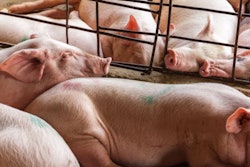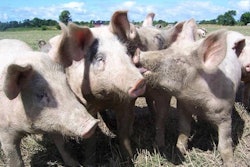
ASF may require animal feed holding times more than twice the length of previous suggestions
African swine fever (ASF) may be far sturdier in animal feed that previously thought, surviving more than twice as long as anticipated by estimates designed to determine feed holding time goals.
Previous estimates assumed that holding soybean meal for 54 days would eliminate 99.99% of viral contaminants, ensuring the feed would not introduce new diseases to the herd. But according to a whitepaper released this month by the Swine Health Information Center, American Association of Swine Veterinarians, National Pork Board and National Pork Producers Council, ASF virus may persist in soybean meal for as long as 125 days.
Other ingredients saw similar results. In choline, for example, it took 155 days to eradicate 99.99% of ASF, according to the report.
Paul Sundberg, executive director of the Swine Health Information Center, said the paper is based Kansas State University’s recent work with the ASF virus. Previous recommendations, he said, were based on studies of Senecavirus A, which was thought to be an unusually durable virus and therefore a good model for estimating holding times.
“We know senecavirus is very hardy in the environment, so we assumed it was a good surrogate,” he said. “We tried to pick the hardiest [virus], and that means you won’t have to worry about the ones that aren’t as hardy.”
But ASF, it turns out, is hardier.
The extended holding times could make it difficult for feed and animal producers to use extended storage as a means of enhancing biosecurity.
“Even holding soybean meal for 54 days was problematic,” Sundberg said. “Holding it even longer will be even more problematic.”
Sundberg emphasized the importance of “stacking” biosecurity measures, rather than relying on a single strategy, to ensure feed safety. Though multiple researchers are developing feed additives designed to accelerate the degradation of viral contaminants in animal feed, none of those additives are approved for commercial use in the U.S. Sundberg also said checking the origin of feed materials, and not sourcing materials from regions know to be affected by ASF, helps ensure feed safety.
“The best way to ensure feed safety is to talk to your feed suppliers about the sourcing of materials that go into their feeds,” he said.
View our continuing coverage of the African swine fever outbreak.


















